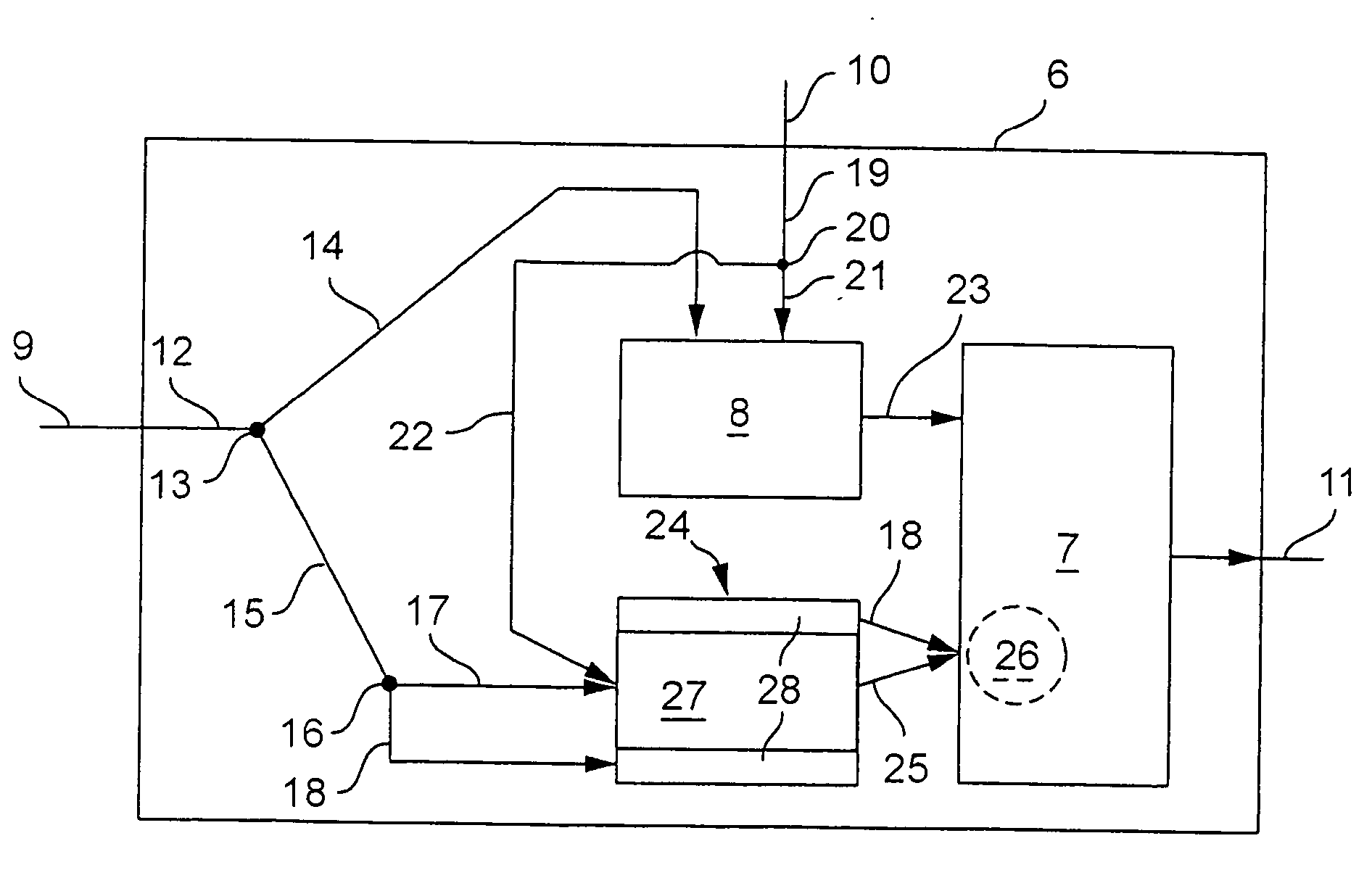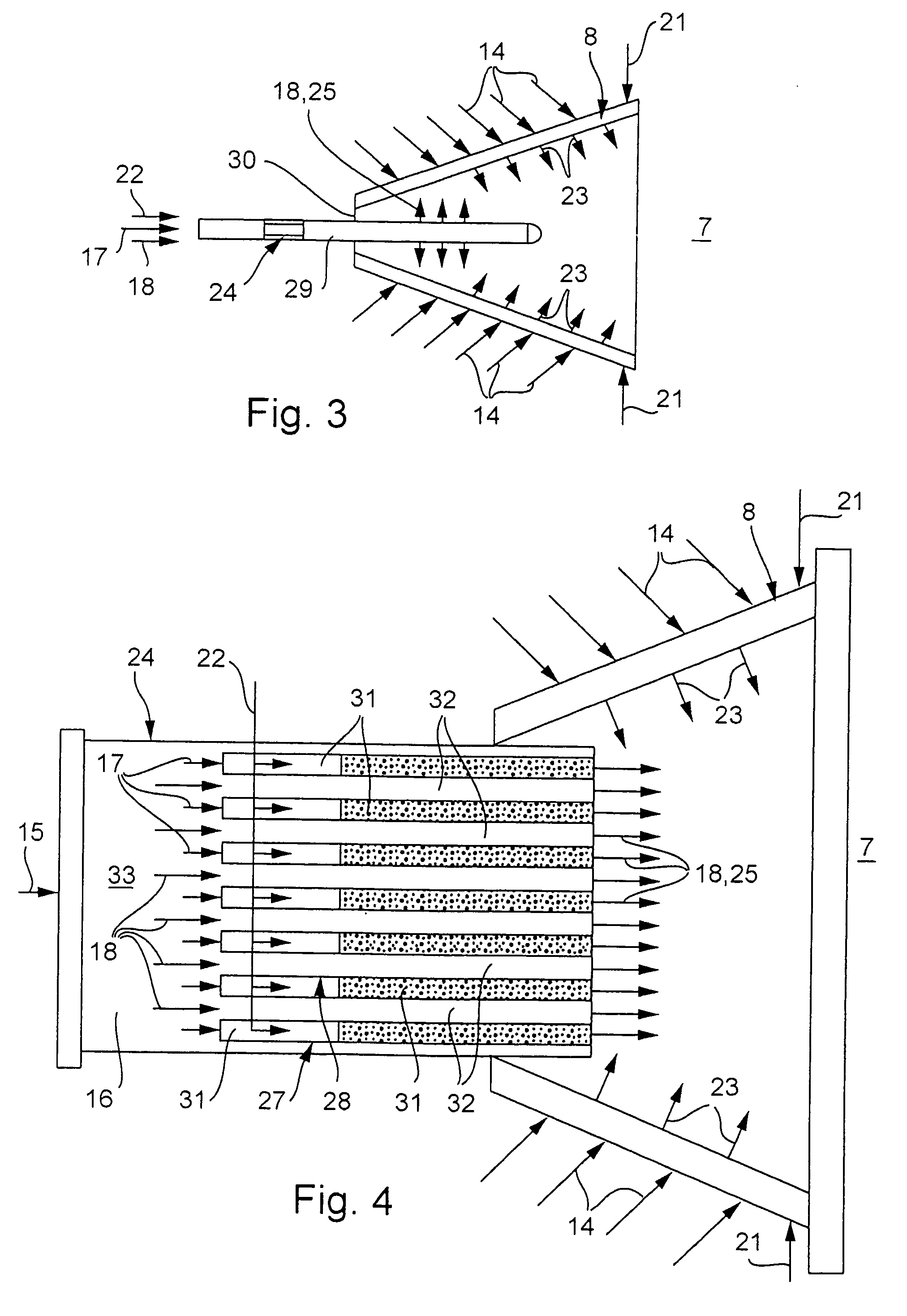Method and apparatus for the combustion of a fuel-oxidator mixture
a fuel-oxidator and mixture technology, which is applied in the direction of combustion using catalytic materials, combustion types, turbine/propulsion engine ignition, etc., can solve the adverse effects of combustion, combustion of residual oxygen, and combustion of fuel at the injection site, so as to increase the conversion rate, the influence of the main combustion is then particularly low, and the pilot flame stability increases.
- Summary
- Abstract
- Description
- Claims
- Application Information
AI Technical Summary
Benefits of technology
Problems solved by technology
Method used
Image
Examples
Embodiment Construction
[0020] In accordance with FIG. 1, a turbogroup 1 comprises a turbine 2, which is designed in particular as a gas turbine, and a compressor 3, which is connected to the turbine 2 via a drive shaft 4. It is customary for the turbogroup 1 to be used in a power plant, in which case the turbine 2 additionally drives a generator 5 via the shaft 4.
[0021] Moreover, the turbogroup 1 comprises a combustion system, referred to as combustor 6, which has at least one combustion chamber 7 and at least one premix burner 8 connected upstream of this combustion chamber 7. On the entrance side, the combustor 6 is connected to the high-pressure side of the compressor 3, and on the exit side it is connected to the high-pressure side of the turbine 2. Accordingly, the combustor 6 is supplied with oxidator, in particular air, via an oxidator pipe 9 from the compressor 3.
[0022] The fuel supply is effected via a corresponding fuel pipe 10. The hot combustion gases are fed to the turbine 2 via a hot gas p...
PUM
 Login to View More
Login to View More Abstract
Description
Claims
Application Information
 Login to View More
Login to View More - R&D
- Intellectual Property
- Life Sciences
- Materials
- Tech Scout
- Unparalleled Data Quality
- Higher Quality Content
- 60% Fewer Hallucinations
Browse by: Latest US Patents, China's latest patents, Technical Efficacy Thesaurus, Application Domain, Technology Topic, Popular Technical Reports.
© 2025 PatSnap. All rights reserved.Legal|Privacy policy|Modern Slavery Act Transparency Statement|Sitemap|About US| Contact US: help@patsnap.com



